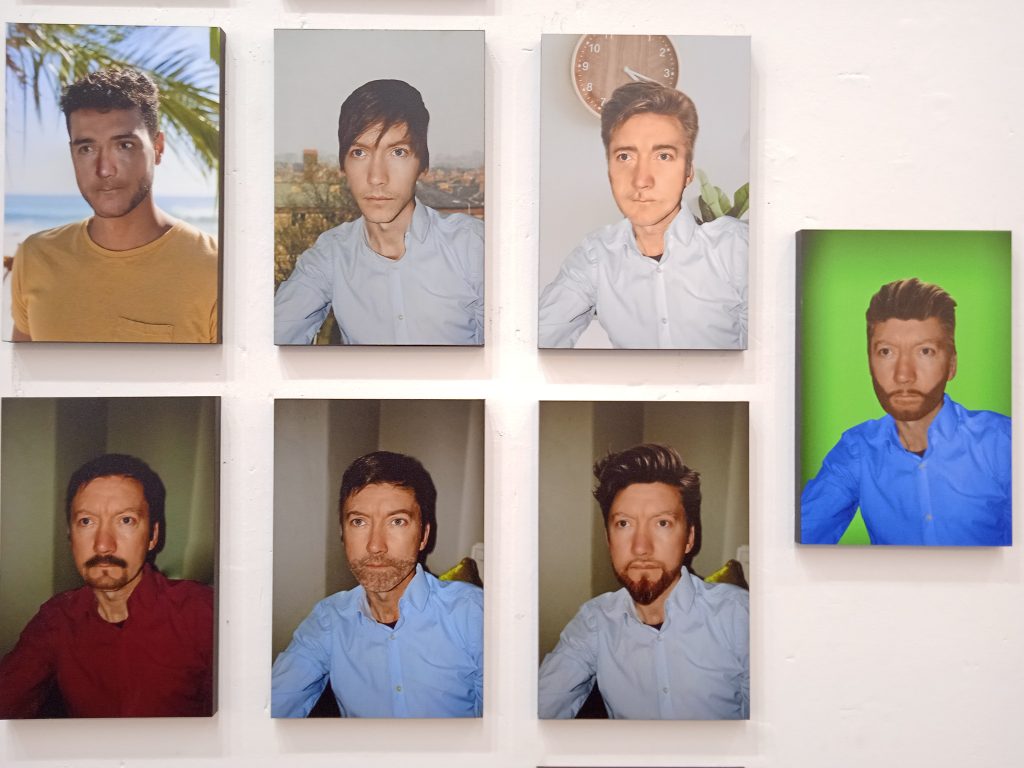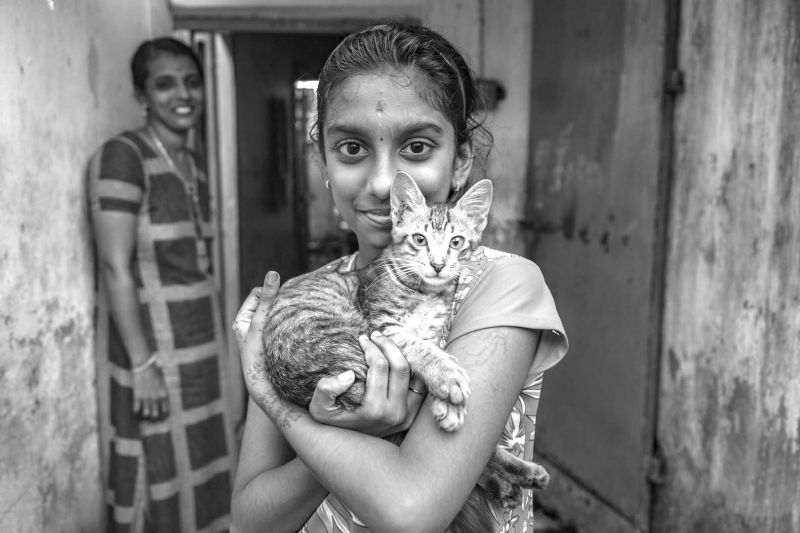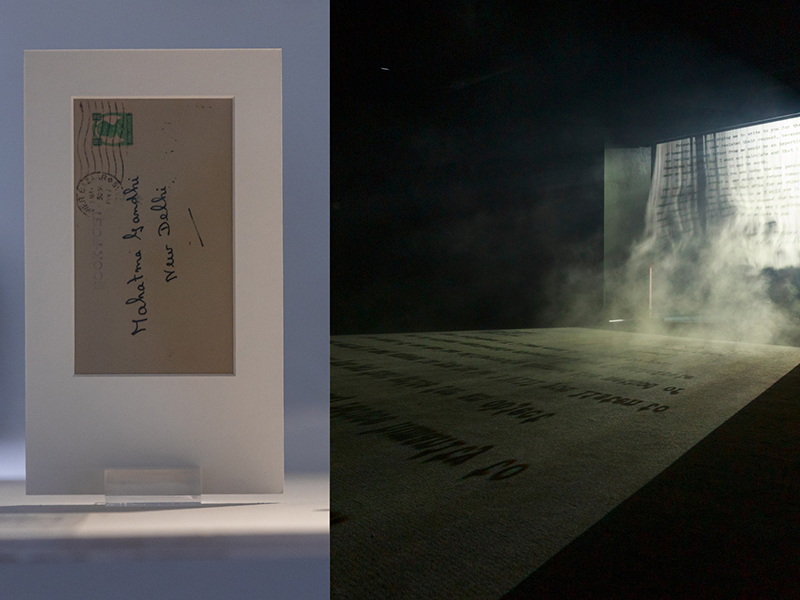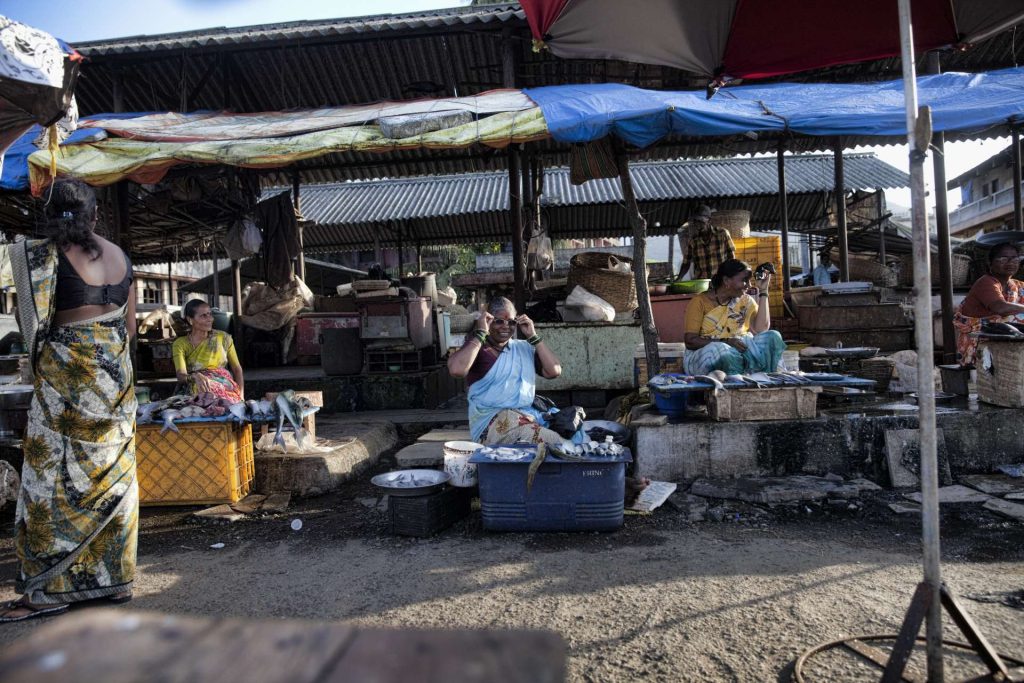Krispin Joseph PX
Is the identity crisis the most following question for human beings? How many identities are we carrying at the same time? Are we always the same? Or different?
Heraclitus once wrote, ‘No man ever steps in the same river twice, for it’s not the same river, and he’s not the same man’. Heraclitus touches the essence of the character of change, now known as Heraclitian flux. Yes, we live in fluctuation, which creates, moulds, and even controls us. Identity crisis is always the subject of art, literature, and philosophy. Many thinkers, artists and writers touch the soul of this identity in many forms and styles in human history, and there is much content available regarding this topic.
Gareth Wyn Owen, an artist from Wales, touches on this topic from a new perspective and tone and tells a story of an online platform and people from cyberspace. Gareth Wyn Owen’s work displaying at the ‘Communities of Choice’ show in TKM Warehouse, Mattancherry, as a part of Kochi Muziris Biennale, presented by Chennai Photo Biennale and Ffotogallery, Wales collectively.
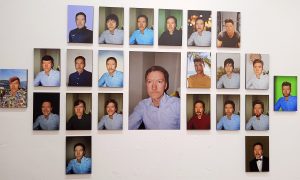
Gareth started this project on Fiverr, a global online marketplace for freelance services, in 2019. Artists are looking into makeover images from all around the world. Gareth gives his images (centre image) to people worldwide and asks them to provide him with a beautiful, calm, young, handsome makeover. It’s about commissioned work, and artists pay them all. Almost fifty people engage with this project on Fiverr and give back the makeover images to Gareth; from that submission, artists select some pictures for display.
In this project, Gareth looks into the diverse nature of the cyber community and the conceptual engagements of the people through mediums and platforms. There are interlinking connections between artists’ agency and the people’s engagements through these projects. Make me up is an instigating and humorous series of the portrait of the self; the project’s seed is a self-portrait of the artist. That seed carries or brings the roots with collaborations across the continents and communities from different cultural- geographical- political and religious backgrounds.
No one’s environment is visible on Fiverr, and they are homogeneous, and the visual representation of these projects brings a heterogeneous spectacle. Gareth gives the image with enough flaws, dull looking, boring background and clothes, and harsh lighting. Most makeover images maintain the same emotion; only two people smile at the artist’s portrait. From one image to another, geography, imagination, and the concept of beauty and youngness have been changed.
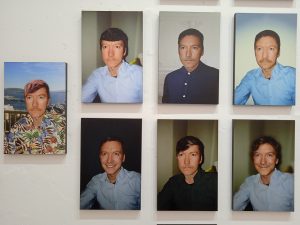
Beauty for someone somewhere is connected with a formal dress code; another is to make him a beachboy, and another is to make him a gym guy with muscles; many people give artists a beard in different shapes. Why is this different? People are distinct, and the notions and representations of youth, beauty and coolness are subjective and only can be culturally defined.
One thing is clear; human identity has the potential to carry different identities in various forms at a time. The complex concept of human identity assembles or constructs this complex phenomenon simultaneously, defined and vague, representing the multitude in singleness.
When engaging with people, our identity is in flux; we change according to with whom we engage. This project reflects that element, and Gareth’s unique style harmoniously gathers the comic narration of his self-identity. Why do people not change the emotion of the artist’s portraits? Are they all carrying the same dull feeling in the pandemic situations? Is that element reflected in this project?
Artists’ self-portraits and the twenty-two makeover or avatar images tell us about the manifestation of the self in different conditions and cultures, topography and notions of beauty. We can check the other side of the project. Freelance designers from around the world work behind this makeover; they use similar or different tools, and unknowingly, they create a body of work that tells about themselves too. Who they are, what they do, and why they don’t.
Is there any gender bias in this project? I am curiously thinking about gender; who has done all makeovers? Is there any gender order, like a male-female-trans designer? Is that element visible or invisible, hidden or open, or is the sexual preference subtly narrated in any makeover image? Age is reflected in these makeover images, and the tools selected may depend on age. Not only related to the artists and the age who made this makeover.
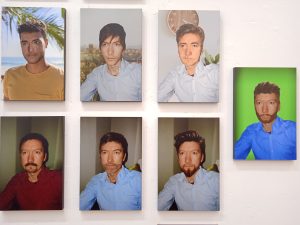
Is that younger designer from a beachside house making the artists cooler and beachboy with casual dresses? Someone fixes a cloak behind the artists and sets a time in the evening; why? One of the Indian freelancers gives boke for artists’ backgrounds, making it more attractive and visually appealing.
Something we need to understand first, India is now ranked as the second fastest-growing freelance market in the world, and there are 15 million freelancers from India currently active. In this project, many freelancers are from the Indian subcontinent with fourteen makeover images.
The most important thing related to this work is the authorship of this project and artwork. That questions go beyond the community aspect of the project and social engagement with people. Each image is the artist’s own, and he conceived this idea and commissioned him to the people; each image is a result of a unique collaboration. Artists don’t mention any freelancer’s name in the image, the project note, and the authorship claimed by the artists. Are these elements brings some ethical question about the artwork? Is the work’s authenticity apparent, or is vagueness there with some critical concerns?
‘Make me up’ uniquely conceptualises the idea of community that carries the notion of beauty and youngness as a ‘good-looking’ visual experience. In this project, we find out ourselves between artists’ self-portraits to makeover images; in between these images, where is the point of social interactions in the community?

Krispin Joseph PX, a poet and journalist, completed an MFA in art history and visual studies at the University of Hyderabad.


